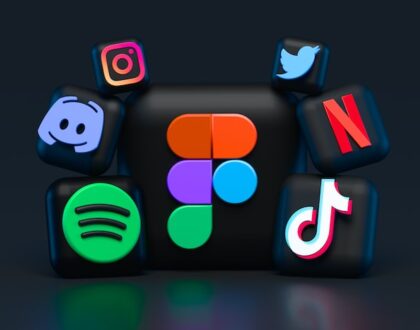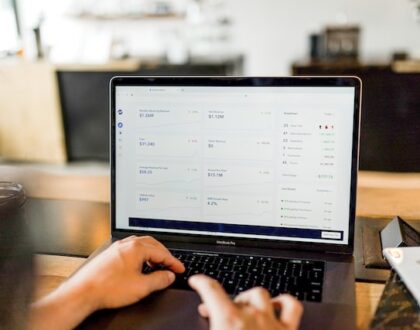Who is the boss? Programmatic advertising vs. Direct buying?

by local
Who is the boss? Programmatic advertising vs. Direct buying?
Are you a publisher debating whether to join the programmatic advertising revolution? If so, this is the post for you.
Given the current popularity of programmatic advertising, publishers may find it appealing to go entirely automated when it comes to ad auctions, sales, and increasing programmatic revenue. Despite the growing popularity of programmatic media buying, we don’t expect Direct ad purchases to go away any time soon.
Half of the publishers continue to rely on direct ad buying to generate revenue and advertisers to place their branding on their ad inventory in front of the correct audience. In this blog post, we’ll look at the advantages of programmatic advertising versus direct ad buying to help you decide which option is best for your company.
DEFINITION
Programmatic Advertising Definition: The programmatic Ad Buying technique comprises the automated purchase of ad inventory. It’s a lightning-fast and efficient technique in which ads are purchased through a real-time bidding auction in which a slew of advertisers put bids at the same time, and the highest bidder wins the ad slot. Programmatic advertising automates the entire ad-buying process, saving a significant amount of time.
Advertising programming employs the OpenRTB protocol and operates on an impression basis. Once an impression is available and purchasers are ready to bid, these auctions take place. This is distinct from Programmatic Guaranteed, which does not involve auctions. They rely on AI or machine learning algorithms because this is an automated media buying procedure.
Direct Media Purchasing: Direct ad buying is selling the publisher’s ad inventory to the advertiser either manually or directly. In this instance, an agency may be employed as a mediator in order to initiate dialogue between publishers and advertising. Direct transactions have been taking place for decades, and both sides are familiar with the ad purchasing process. In this instance, no auctions are held, and the ad inventory is sold at a predetermined price.
How do programmatic advertising and direct purchase differ?
Advertisers engage with publishers directly or through a reputable agency for direct deals. Following that, the request for proposal is sent by the publishers (RFP). Because everything happens immediately here, including policy and conditions discussion and pricing negotiation, both the advertiser and publisher sign an insertion order (IO).
Following that, the advertiser is permitted to display his ad creatives on the publisher’s ad inventory for a set rate and time period.
Users landing on a publisher’s site are provided a bid request containing information about their parameters (age, demographics, likes) for targeting reasons in programmatic transactions.
Following that, the publisher’s supply side platform (SSP) delivers this bid request to the ad exchange that has been determined to display an appropriate creative to the user.
Based on the user’s targeting information, the ad exchange subsequently sends the signal to the demand side platform (DSP). The ad exchange then holds an auction to determine the winning ad creative.
Finally, after being obtained from the ad server, the ad creative is shown on the publisher’s site.
programmatic vs. direct purchase
Direct Deals win when it comes to which ad-buying technique makes the most money because publishers only put up their premium advertising inventory for direct sales. Because of the increased CTRs and ticket conversions, advertisers are ready to spend more in this instance.
Programmatic deals, on the other hand, such as PMPs and RTBs, do not guarantee or provide an accurate estimate of how much money publishers will make. The amount of money earned is determined by the number of impressions for which advertisers bid. In some cases, ad units are substituted with blank ad impressions due to a low fill rate, resulting in a loss of ad revenue for publishers.
Advantages of Programmatic Advertising
- Advertising procedure has been simplified.
- When it comes to insertion orders, invoicing, or direct negotiations, time is saved.
- Because it is completely automated, publishers must give their inventory details, while advertisers must share their ad creative, target audience, and budget information.
- Ad serving is automated.
- There are numerous alternatives available on the programmatic platform.
Advantages of Direct Media Purchasing
- The ability to customize ad units.
- Premium inventory generates more ad income.
- With the correct contacts, you can have access to significant brand deal ad dollars.
- It carries a higher financial worth each impression.
Can I utilize both programmatic advertising and direct buying?
You must be asking, as a publisher, if you can use both choices at the same time. You will only profit from programmatic advertising and insertion order ad sales.
Unfortunately, most publishers are not working with the correct adtech vendor to assist them to optimize ad revenue from both arrangements. In this instance, Programmatic Guaranteed is the ideal solution because it combines direct and programmatic advertising.
You get clear insertion order-based approaches as well as automatic ad delivery with programmatic assured advertising.
Why should you try Programmatic Guaranteed?
- The programmatic guaranteed strategy combines direct and programmatic buying, leading to increased programmatic revenue.
- Pricing is negotiated by both parties.
- With direct media purchase, ad programs have set start and finish dates.
- Some inventory is made available just to specific marketers, much like direct advertising.
- When you buy and serve the ad, you can still reap the benefits of programmatic automation.
Alternatives to Programmatic Guaranteed
Private Marketplaces (PMPs): PMPs are a simplified form of open ad exchanges that allow a select group of advertisers to access the publisher’s unique inventory. Publishers grant specific buyers privileged access to their advertising inventory through a preferred programmatic agreement, although that access is also available to other buyers.
Programmatic Direct Media Buying in the Future
Direct buying, the more traditional way, was expected to become obsolete, but combining both of these ad buying models is thought to be the most profitable alternative for maximizing ad revenue. To improve advertising for publishers and agencies, ad tech must combine the benefits of IO purchases and programmatic ad buying. It is not possible for agencies to purchase display ads from the same website in ten different locations at ten different prices. Advertisers prefer to acquire ad space from a single source at the best possible price.
As ad technology evolves, the disadvantages of programmatic sales and direct ad buying melt away as their benefits combine to form direct programmatic buying.
Programmatic Ad Buying Bot Traffic
Invalid Traffic (IVT) and ad fraud are programmatic advertising’s Achilles, causing revenue clawbacks and suspensions in the long run. This is the most difficult aspect of getting entirely automated, yet we can’t blame the programmatic industry for traffic bots.
Direct agreements are bot-proof and safer than programmatic deals because they are negotiated directly without the use of third-party software. Furthermore, due to the non-disclosure agreement between both companies, user data will not be released.
Fortunately, we offer the ideal ad fraud solution. Their IVT-busting tool, Traffic Cop, is intended to assist publishers in hiding their adverts from bots.
What should you do now?
The creatives and costs for programmatic transactions are chosen dynamically, making it difficult for publishers to estimate earnings. However, you can estimate a range using previous inventory performance data.
Direct media buying entails direct negotiation and manual insertion order creation, so save your best inventory for direct media buying to maximize profits. Direct purchases have little income uncertainty because the prices are usually the same owing to previous bargaining conversations.
- It is recommended that you employ both programmatic and direct media buying to boost your ad revenue.
- Utilize programmed transactions to sell unsold inventory.
- Only use your premium inventory for direct media buys.
We focus on both direct buying and programmatic advertising and offer both deals in the best way feasible. You’ll never have to worry about how to sell your products when you work with us. Relax while our AdOps specialists and Pubguru ad technology take care of the rest.
Recommended Posts

New Social Media Trends in the Financial Sector in 2024
February 19, 2024


